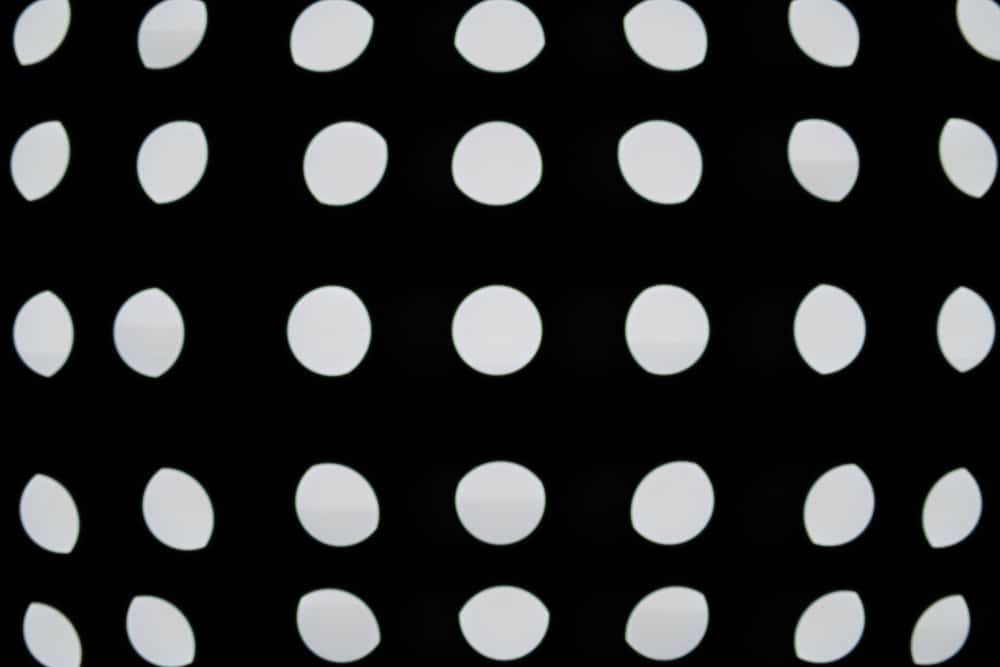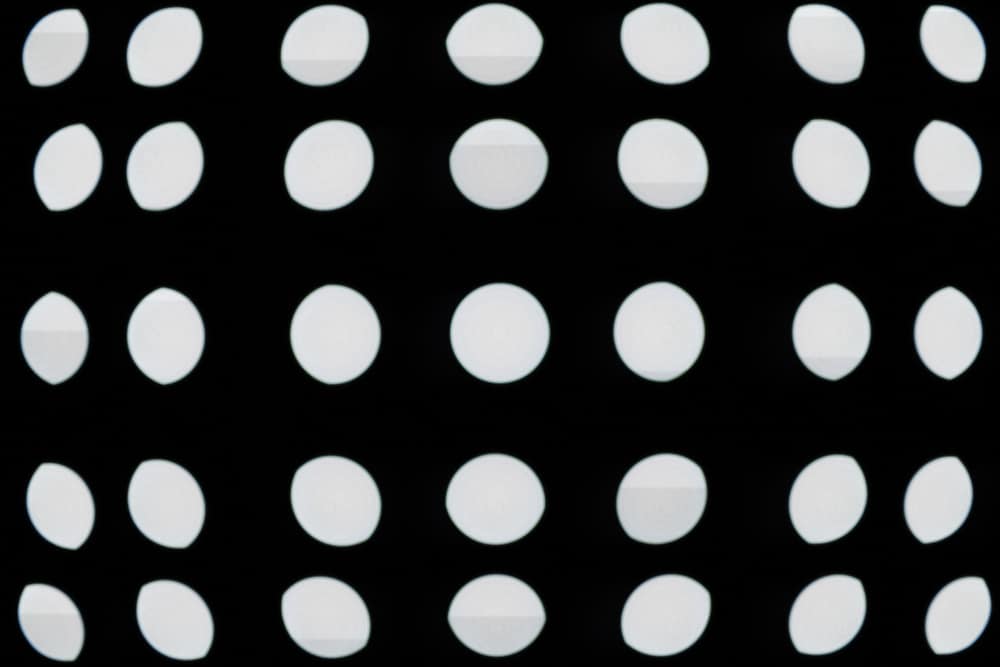This is the sixth in a series of posts about building a bokeh simulator. This series starts here.
It’s become apparent to me that what many people talk about when they discuss a lens’ out of focus (OOF, as opposed to almost-focused) bokeh is related to the off -axis occluding of the sensor’s view of the lens aperture that occurs when the lens is fairly wide open. It is with some reluctance that I begin to contemplate how to simulate that. I expect it will be more difficult to code than the simple on-axis model that I have now, and that it will take a lot loonger to run.
Nevertheless, I am starting to explore the idea. I was pretty sure that I knew about what was happening here, but, just to make sure, I made 35 exposures with a Batis 85 (which is known for its imperfections in this regard) on a Sony a7RII. Then I stacked them all (8.4GB!) in Photoshop, and set the layer blend to “lighten”.
What do we have here? Y0oou can see that, as you move away from the axis, the inner edge of the ono-axis OOF point spread function (PSF) is cut away by a circle whose diameter is somewhat larger than the diameter of the on-axis OOF PSF itself.
Here’s a similar set of images with the Otus 85, likewise wide open (which is f/1.4 on the Otus, as opposed to f/1.8 on the Batis).
The idea is the same, but the amount of occlusion is somewhat less for the Otus, even though it’s a faster lens. The radii of the two circles are nearly the same in the Otus image.
Can we parameterize this? I’m thinking that this would be a good place to start:
- Off-axis distance before occlusion begins.
- Radius of the occluding circle as a proportion to that of the on-axis OOF PSF
- Amount of overlap of the centers of the two circles as a proportion to radius of the on-axis OOF PSF
In the above two images, it looks like the dimension in 1 is near zero, but I’ve seen lenses where the occlusion didn’t start happening right away. Anybody know the function that relates 3 above to off-axis distance?
Comments and suggestions are appreciated.


http://imgur.com/a/3FKlV
This is a gallery of a constant amount of defocus and increasing amounts of astigmatism. Same basic code as last time.
You can create this phenomenon with just astigmatism, but vignetting also contributes to it. Vignetting truncates the pupil in the direction along the extent of the object (so in +Y, there is less extent to the pupil in Y, in +X there is less in X, etc). “Upper” and “Lower” vignetting are distinct, one referring to the upper half of the pupil, and one the lower half.
You can use astigmatism and vignetting against each other to combat this, but it takes a lot of astigmatism to do much of significance.
You can test if the effect is predominantly from one or the other in a lens by looking at the dots in front of and behind focus. Astigmatism will flip the axes of the lemon, vignetting won’t.
” Amount of overlap of the centers of the two circles as a proportion to radius of the on-axis OOF PSF
In the above two images, it looks like the dimension in 1 is near zero, but I’ve seen lenses where the occlusion didn’t start happening right away. Anybody know the function that relates 3 above to off-axis distance?”
That can be simulated in a geometric model via introducing a longitudinal separation between the aperture and the occluding circle. With a suitably larger occluding circle there would be a central “dead zone” of zero occlusion. That diameter won’t necessarily be something you can touch with calipers, it would be the apparent size of the obstruction as seen through the leading lens elements.